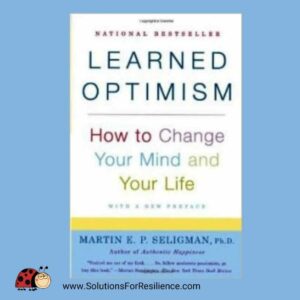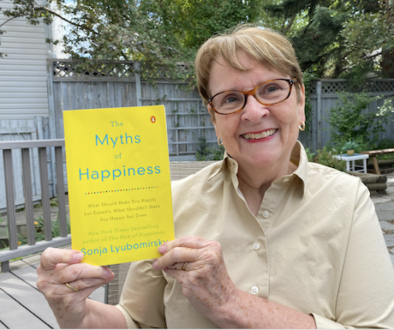Learned Optimism by Martin Seligman — Book Summary

In 1990, Martin Seligman released his groundbreaking book, Learned Optimism: How to Change Your Mind and Your Life. I have occasionally been accused of behaving Pollyannaish or overly optimistic, his work is of interest to me. If you have ever wondered if you lean towards optimism, which in itself is a great way to relieve stress; or if you lean towards pessimism, which is an effective way to increase stress, I encourage you to read on.
Overview:
Those with a more pessimistic attitude tend to call those with optimism naïve and out of touch with reality. Meanwhile, those with a hefty dose of optimism tend to experience their pessimistic friends as discouraging and gloomy. My favoritism may show in the following and I admit it delights me to have my bias confirmed.
Basic Concepts:
When Life Goes Badly
Seligman describes pessimism as a habit of explaining painful life happenings as permanent, all-encompassing and personal. Pessimists use words like “always” and “never.” (“I’ll never succeed. I’ll always be at the bottom of the garbage bin.”) Their optimistic neighbor, with the mantra of, “This too shall pass,” speaks with words like “sometimes” and “recently.” (“Hey, so what? I sometimes make mistakes, but I learn from them.”) Some people find optimists a tad irritating. While pessimists tend to generalize their disappointments (“All politicians are crooked.”), optimists focus on specific incidents of displeasure (“Bill Clinton lied to us about his zipper being zipped.”).

When Life Goes Merrily
The pessimistic explanation for happiness is temporary. (“Ah, it was a fluke. My competitor didn’t know what she was doing, so I got the contract.”) That’s when optimists give a permanent explanation based on their character or abilities. (“With my talent, uniqueness, flexibility and charming character, I will continue to attract clients.”) Did I mention that optimists can be a tad irritating? But so can pessimists. It is a problem when any strength or quality is taken to an extreme.
As Seligman states, “The optimistic explanatory style for good events is opposite that for bad events. The optimist believes that bad events have specific causes, while good events will enhance everything he does; the pessimist believes that bad events have universal causes and that good events are caused by specific factors.”
Internal versus External
Seligman describes how pessimists tend to internalize responsibility when circumstances are negative. (“They think they are worthless, talentless, and unlovable.” They say things like, “I’m stupid. It’s all my fault.”) Meanwhile, those with optimism tend to blame other people or circumstances outside themselves. (“They are so stupid; they don’t know a good thing when they see it.”)
The danger of extreme optimism is the tendency to avoid responsibility for one’s part in an unsuccessful event. Interestingly, in this facet of human behavior, I tend to think and act pessimistically by accepting more responsibility for an event than is warranted. To pessimistically take on inappropriate responsibility in the extreme is a sure formula for depression.
If given the chance, Seligman and I would vote for optimism. Consider the following:
- Pessimism encourages depression, therefore is associated with a weak immune system.
- Pessimism feels down—blue, sad, worried or anxious.
- Pessimism can become a self-fulfilling prophecy. Because pessimists tend not to create or face challenges, they fail more frequently—even when success is possible.
Seligman says, “The best thing one can say about a pessimist is that his fears were founded.”
- Optimism encourages happiness, therefore is associated with vitality.
- Optimism feels up—hopeful, confident and cheerful.
Optimism needs restraint when the cost of failure of a choice is clearly too high. There are times we need to slow down and look at reality. A little dose of pessimism adds to being realistic.
8 Optimistic How-To’s:
- Realize your beliefs are just that—beliefs. They may or may not be factual.
- Ask if your beliefs are useful and supportive to the kind of life you want to live.
- Argue with yourself. Say, “Stop!” to pessimistic self-talk and replace with some optimistic thinking. “I know enough. I do enough.”
- Ask, “What’s the worst that could happen? Do I have a strategy to deal with that outcome?” If not, create one.
- Do something for those who are less fortunate.
- Develop your optimism muscle by seeing the bright side. Change Bad News into Good News. “I don’t like the extra weight on my hips but now there’s more of me to love.”
- Count your blessings.
- Hope for a great today and a better tomorrow.
Martin Seligman Quotes:
- “Although there are clear benefits to learning optimism—there are also dangers.”
- “We want people to own up to the messes they make, to be responsible for their actions. However, depressed people often take much more responsibility for bad events than is warranted.”
- “How you think about your problems, including depression itself, will either relieve depression or aggravate it.”
- “A failure or a defeat can teach you that you are now helpless, but learned helplessness will produce only momentary symptoms of depression—unless you have a pessimistic explanatory style.”
- “We all become momentarily helpless when we fail. We feel sad, the future looks dismal, & putting out any effort seems overwhelmingly difficult.”
- “If your level of pessimism can deplete your immune system, it seems likely that pessimism can impair your physical health over your whole life span.”
- “If the cost of failure is high, optimism is the wrong strategy.”
- “Learned optimism works not through an unjustifiable positivity about the world but through the power of non-negative thinking.”
- “Each time you face adversity listen carefully to your explanations of it. If pessimistic, actively dispute them.”
Summary:
Optimists and pessimists have been around since Noah. Was he a pessimist to believe the flood was coming; or was he an optimist to believe his idea of an ark would help all those critters? Optimists are definitely known for their action and hope.
Please check out these related posts:
![]()




February 12, 2021 @ 10:03 am
This concept is always so fascinating! Thanks for the great job, find more ideas on Prof Seligman’s Learned Helplessness, flipping it actually!
Read- Is Learning Optimism A Realistic Feat?- The Mental Health Series 4 link.medium.com/12WdAwgQOdb
February 14, 2021 @ 1:01 pm
Thank you for your comment Paddy and providing a link to your post on Seligman’s work. I met him years ago at the first World Congress on Positive Psychology in Philadelphia. What an adventure that was. I am glad to meet another fan. I am particularly fond of Seligman’s book, Flourish. If you are interested I posted a Book Summary on it here.
Here’s to your building of positivity and resilience!